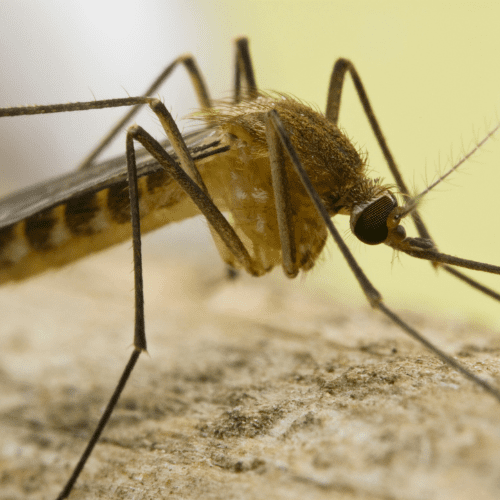Mosquito
Introduction to
Mosquitoes are one of the most widespread and annoying pests globally, known for their itchy bites and role in transmitting diseases. These small, flying insects thrive in various climates and can be found in urban, rural, and natural environments. Understanding their biology, habits, and effective prevention methods is crucial for minimizing their impact on human health and comfort. Mosquito control is not only about reducing the nuisance they cause but also about preventing the spread of serious diseases such as malaria, dengue, and Zika virus.
Recognition
Mosquitoes are small, slender insects, typically measuring between 3 to 6 mm in length. They have long legs, a pair of wings, and a distinctive proboscis used for feeding. Most mosquitoes are grayish to dark brown, with white, silver, green, or iridescent blue scales on their bodies and wings. They are often mistaken for similar insects like midges and crane flies, but mosquitoes can be distinguished by their unique wing vein patterns and the presence of scales on their bodies. Female mosquitoes are responsible for biting and blood-feeding, while males primarily feed on nectar.
Biology
Mosquitoes undergo complete metamorphosis, progressing through four life stages: egg, larva, pupa, and adult. Females lay eggs on the surface of standing water, which hatch into larvae (commonly known as wrigglers). The larvae feed on organic matter in the water and then develop into pupae (tumblers). After a few days, adult mosquitoes emerge from the pupae. Female mosquitoes require a blood meal to develop eggs, which they obtain by biting humans and animals. This blood-feeding behavior makes them vectors for various diseases. Males, on the other hand, feed on nectar and do not bite.
Habits
Mosquitoes are highly adaptable and can breed in a wide range of environments, from natural wetlands to man-made containers holding water. Common breeding sites include stagnant ponds, marshes, gutters, discarded tires, and any container that can hold water. Mosquitoes are most active during dawn and dusk, but some species feed during the day. They are attracted to their hosts by carbon dioxide, body heat, and body odors. Different mosquito species have preferences for different hosts, with some preferring humans, while others target birds, livestock, or other animals.
Prevention
Preventing mosquito infestations involves reducing breeding sites and protecting oneself from bites. Eliminate standing water around your home by emptying containers, unclogging gutters, and covering water storage units. Use mosquito repellents containing DEET, picaridin, or oil of lemon eucalyptus on exposed skin. Install screens on windows and doors to keep mosquitoes out of the house. Wear long-sleeved shirts and long pants, especially during peak mosquito activity times. Use mosquito nets over beds, particularly in areas where mosquito-borne diseases are prevalent. Regularly inspect your property for potential breeding sites and take action to eliminate them.
Professional
If mosquito infestations become overwhelming, professional pest control services can provide effective solutions. STL Pest Control offers comprehensive mosquito management programs, including larviciding and adulticiding treatments to reduce mosquito populations. Their technicians are trained to identify breeding sites and implement control measures tailored to the specific species present. In severe cases, they may recommend ongoing maintenance plans to keep mosquito populations at bay. Professional services ensure thorough and long-lasting mosquito control, reducing the risk of mosquito-borne diseases and enhancing outdoor comfort.



Our Office









